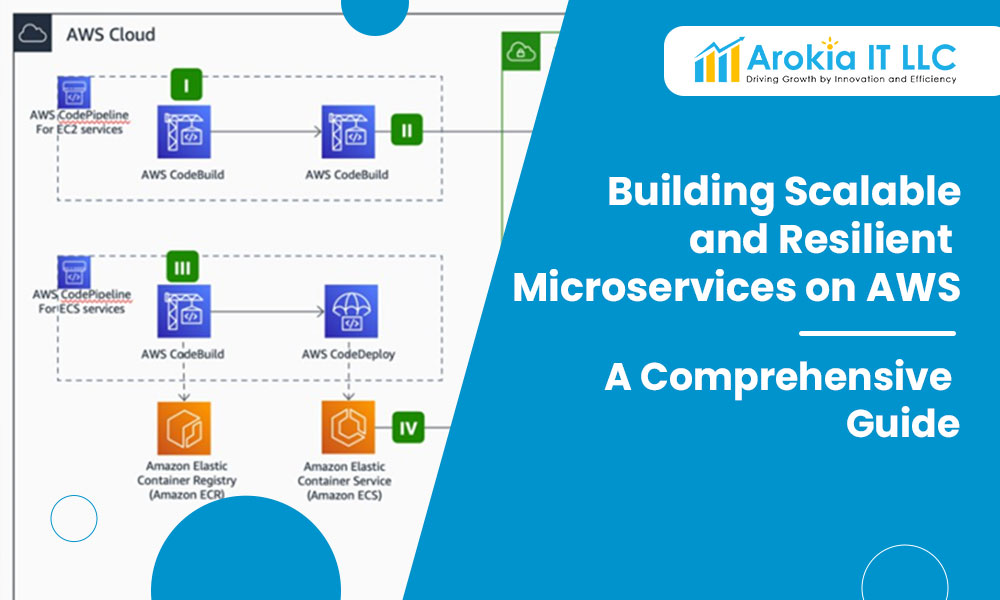Building Scalable and Resilient Microservices on AWS: A Comprehensive Guide
Microservices architecture has revolutionized the way we design and deploy applications, providing flexibility and scalability. In this guide, we’ll delve into the principles and best practices for building a scalable and resilient microservices architecture on AWS.

Microservices architecture breaks down monolithic applications into smaller, independent services that can be developed, deployed, and scaled independently. AWS, with its suite of services, is an ideal platform for building and running microservices.
AWS Services Overview
Amazon ECS (Elastic Container Service)
Amazon ECS is a fully managed container orchestration service that simplifies the deployment, management, and scaling of containerized applications. It’s an excellent choice for running microservices in containers.

AWS Lambda
AWS Lambda allows you to run code without provisioning or managing servers. It’s perfect for microservices that require event-driven, serverless compute.

Amazon API Gateway
Amazon API Gateway enables the creation and management of scalable APIs. It serves as a central entry point for microservices, handling tasks such as traffic management and authentication.

Architecture Design
High-Level Architecture
The microservices architecture on AWS involves a combination of ECS, Lambda, and API Gateway. Each microservice is encapsulated in its own container or serverless function.
Containerization with Amazon ECS
Amazon ECS allows you to deploy and manage Docker containers at scale. Each microservice can be containerized, providing consistency across development, testing, and production environments.

Serverless Microservices with AWS Lambda
For specific microservices that require event-driven execution, AWS Lambda is an excellent choice. It automatically scales based on the incoming traffic, ensuring optimal performance.

API Management with Amazon API Gateway
Amazon API Gateway simplifies the creation, management, and deployment of APIs. It acts as a front door for microservices, handling tasks such as authentication, authorization, and rate limiting.

Implementation Steps
Setting Up Amazon ECS
- Create an ECS cluster for hosting microservices.
- Define ECS tasks and services for each microservice.
- Configure load balancing for distributing traffic.
Implementing AWS Lambda Microservices
- Create Lambda functions for serverless microservices.
- Define triggers for Lambda functions, such as API Gateway, S3 events, or custom events.
Configuring Amazon API Gateway
- Create an API in API Gateway for each microservice.
- Configure API Gateway settings, including authentication and throttling.
Best Practices and Optimization
Scaling Strategies
Implement auto-scaling for ECS services and leverage Lambda’s automatic scaling for serverless microservices. Adjust scaling policies based on traffic patterns.
Fault Tolerance
Design microservices to be resilient to failures. Implement retry mechanisms, circuit breakers, and error handling strategies.
Monitoring and Logging
Use AWS CloudWatch for monitoring ECS services and Lambda functions. Set up centralized logging with AWS CloudWatch Logs for better visibility into your microservices.
Conclusion
Building a scalable and resilient microservices architecture on AWS involves careful planning and the right selection of services. By combining the power of Amazon ECS, AWS Lambda, and API Gateway, you can create a flexible and efficient microservices ecosystem.
Next Steps
Explore additional AWS services that can enhance your microservices architecture. Consider incorporating Amazon DynamoDB for serverless databases, AWS Step Functions for workflow orchestration, and Amazon SNS for event-driven communication between microservices.
Resources
Happy microservices building!
Harrish Murugesan
Author
